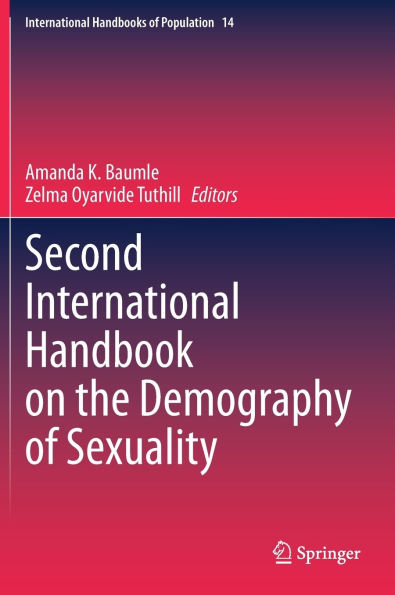Second International Handbook on the Demography of Sexuality
A decade after the publication of the first International Handbook on the Demography of Sexuality, there have been fundamental shifts in how we measure sexual and gender identities and the breadth of available population-level sexuality data. The chapters in this second edition of this handbook provide guidance on methodological approaches involved in studying population sexuality, as well as insight into the ways that sexuality shapes key demographic outcomes. Chapters examine how we measure sexual identities and behaviors on surveys, sexuality changes across the life course, international perspectives on sexual behaviors and identities, and the ways that sexual identities shape families, labor market experiences, and health outcomes. Despite these developments, we still know relatively little about key demographic questions related to fertility and migration for sexual minorities, as well as about understudied topics of sexuality that fall outside of risk-focused analyses. In particular, much of our understanding of sexuality has been motivated by controlling the spread of sexually transmitted infections or adolescent pregnancies, rather than understanding motivations for sexual interactions, such as pleasure. Accordingly, although the research set forth in this book provides insight into existing knowledge of sexual behavior and of sexual minority populations, the chapters also point researchers and policymakers toward needed areas of research and data collection.
1147082975
Second International Handbook on the Demography of Sexuality
A decade after the publication of the first International Handbook on the Demography of Sexuality, there have been fundamental shifts in how we measure sexual and gender identities and the breadth of available population-level sexuality data. The chapters in this second edition of this handbook provide guidance on methodological approaches involved in studying population sexuality, as well as insight into the ways that sexuality shapes key demographic outcomes. Chapters examine how we measure sexual identities and behaviors on surveys, sexuality changes across the life course, international perspectives on sexual behaviors and identities, and the ways that sexual identities shape families, labor market experiences, and health outcomes. Despite these developments, we still know relatively little about key demographic questions related to fertility and migration for sexual minorities, as well as about understudied topics of sexuality that fall outside of risk-focused analyses. In particular, much of our understanding of sexuality has been motivated by controlling the spread of sexually transmitted infections or adolescent pregnancies, rather than understanding motivations for sexual interactions, such as pleasure. Accordingly, although the research set forth in this book provides insight into existing knowledge of sexual behavior and of sexual minority populations, the chapters also point researchers and policymakers toward needed areas of research and data collection.
199.99
Out Of Stock
5
1

Second International Handbook on the Demography of Sexuality
436
Second International Handbook on the Demography of Sexuality
436Related collections and offers
199.99
Out Of Stock

Product Details
| ISBN-13: | 9783031879104 |
|---|---|
| Publisher: | Springer Nature Switzerland |
| Publication date: | 06/19/2025 |
| Series: | International Handbooks of Population , #14 |
| Pages: | 436 |
| Product dimensions: | 7.01(w) x 10.00(h) x (d) |
About the Author
From the B&N Reads Blog
